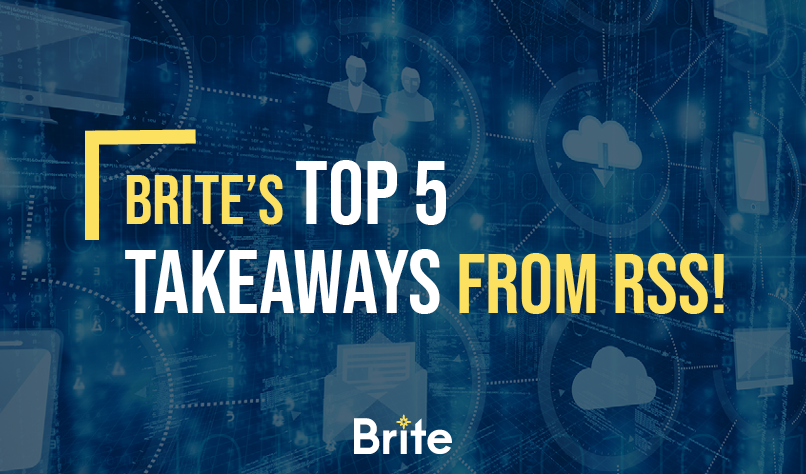The 2019 Rochester Security Summit is in the books! After a full two days of meeting and hearing from security leaders, Brite is excited to share the top 5 takeaways from the event.
1. Act Smarter, Not Harder
Rapidly growing digital footprints and infrastructures are forcing IT department’s resources to be stretched thin. While the digital shift has endless benefits, it’s also creating an open slate for vulnerabilities and threats. Implementing a SIEM helps manage the high number of alerts inundating organizations. A SIEM combines security event management and security information management to provide threat monitoring, event correlation, incident response and to analyze log and event data in real-time. Typically, the SIEM is managed in-house (by the already over-worked team), but IT departments can outsource the task to increase efficiency.
Act smarter, by outsourcing to a managed SIEM provider. A managed SIEM will: minimize alerts, shift the teams focus to strategic projects and maximizes ROI on security initiatives. For example, with Brite’s managed SIEM; BriteProtect, we first expertly tune the software to eliminate the false positives, then remaining alerts are vetted by the engineers to validate legitimacy. Rather than having to check each alert, alerts are monitored and vetted by our 24/7 SOC. Customers are only alerted on true alerts, allowing IT teams to focus on strategic projects instead of being reactive.
2. It All Starts with Visibility
The purpose of a proper and strong cybersecurity plan is to protect networks, devices and data from an attack or unauthorized access. As a result, there are a magnitude of products, tools and solutions that companies can implement. However, it’s challenging to successfully secure an organization if you don’t know what is connected to it or where things are on a network. That’s where visibility comes in. Visibility is an organizations night vision glasses in a dark haunted house. Yeah, without them you can see some stuff and make your way through, but with night vision glasses you can see the man against the wall before he jumps out. Check out this blog goes in-depth into why visibility is the first building block of a strong security plan.
3. Cyberhealth of Your Vendor Ecosystem
The interconnectivity of today’s economy means that most companies work with multiple third-party vendors. Whether it’s utility service companies, HVAC repair people, or vending machine providers, multiple third parties have access to the network. Why is this a problem? Companies can take all the right steps and implement the right tools to safely secure their network, but that is not enough. If a third-party is unsecure, then attackers can use that to infiltrate the network.
Understand and manage third-party risk with a cybersecurity ratings platform. The platform allows for continuous identification, monitoring and management of risk. Rather than the traditional path of evaluating a tool through POCs and proposals, simply start with an A-F security rating to gain insight into third-party risk.
4. Protect Data at the Source
Ah, data – the treasure chest in the business world. From business ideas and documents to employee records, data is a goldmine for attackers. It’s what attackers want and what companies are failing to sufficiently protect. With data being vulnerable, it’s critical for companies to prioritize protecting it. In this age, data is growing, spreading out and becoming harder to protect. Combine visibility and context to easily prioritize sensitive data and automatically set permissions based on users and/or roles, while not obstructing people from job-critical information.
5. Control Your Cyber Exposure
You’ve heard about the digital transformation, right? With that is the emergence of cyber exposure. Cyber exposure is the shift from static and siloed visibility into dynamic and holistic visibility across the expanding modern attack surface. It objectively measures cyber risk to help guide strategic decision making. When you gain cyber exposure you can confidently answer: Where are we exposed? Where should we prioritize based on risk? Are we reducing our exposure over time? How do we compare to our peers? The cyber exposure lifecycle takes vulnerability management to the next level. Across all IT, IoT, OT and cloud surfaces discover, assess, analyze, fix and measure cyber exposure.
The shift to digital and recent advancements in cybersecurity are forcing organizations to take a step back and look at how its overall security plan is addressing any gaps the digital transformation has created. Lucky for you, your organization doesn’t have to do it alone. Brite is #YourPartnerInBattle and is ready to help make sure all the pieces of your plan fit together.

